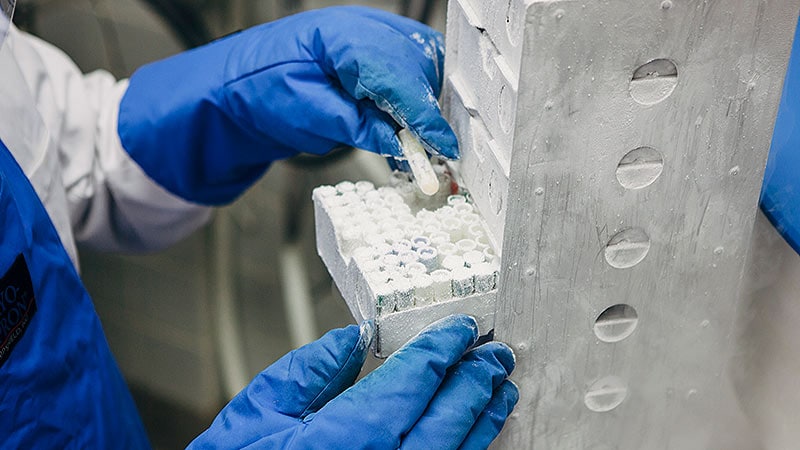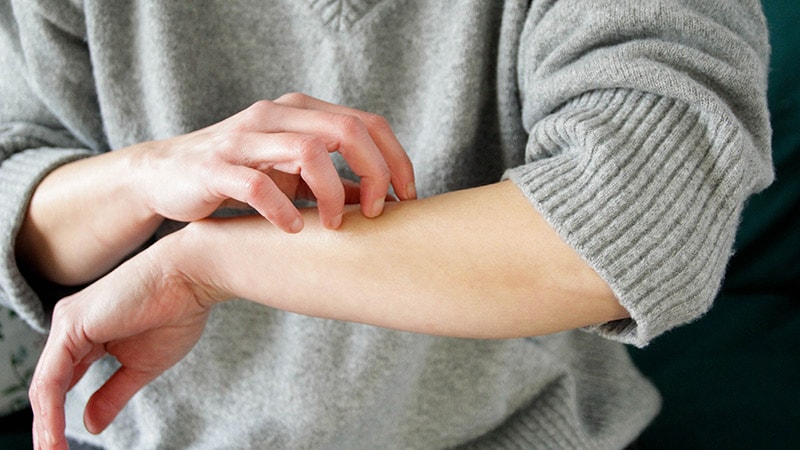‘Medical Antifreeze’: How to Freeze and Thaw Brain Tissue
Stories about humans waking up from cryosleep have dominated popular culture for decades in the Alien films, Cameron’s Avatar, and Nolan’s Interstellar.
While these films are out there, space- and time-wise, we know the science exists offscreen.
Globally, there are about 500 people in cryogenic preservation: 300 of them in the United States. Thousands more — currently, more than 5000 — are on the waitlist for future cryonic arrangements.
The technology for human revival has yet to exist, of course, but cryopreservation as a discipline has long been used in fertility and medical research, particularly for the opportunities it presents in regenerative medicine, organ transplantation, and neuroscience.
All of this led to some exciting news: For the first time, scientists at the University of Erlangen-Nürnberg in Erlangen, Germany, successfully revived adult mouse brain tissue after cryopreservation.
How They Did It
To do so, lead researcher Alexander German and his team knew they had to avoid damage caused by ice formation and crystallization. Traditional freezing methods involving slow cooling at a controlled rate have resulted in the significant loss of synaptic connections in neural tissue.
They instead opted for vitrification, transforming the biological tissue into a noncrystalline, amorphous, glass-like state with high cooling rates and, more importantly, a high cryoprotectant, or cryoprotective agent (CPA), concentration.
First discovered in the 1940s, cryoprotectants, or “medical-grade antifreeze,” reduce the risk of crystallization and, by extension, irreversible damage by lowering the freezing point and increasing the solution viscosity and “glass transition” temperature. On a molecular level, they can do this by reducing the concentration of electrolytes or disrupting water–water hydrogen bonds.
Animals that hibernate during the winter months produce their own type of cryoprotectants as they transition into a state of torpor. “Naturally occurring cryoprotectants in hibernating animals, such as glycerol, glucose, sorbitol, and trehalose, protect tissues against freezing injury during extended periods at subzero temperatures,” said German. “Animals such as amphibians, insects, and some reptiles accumulate these substances seasonally or in response to environmental triggers.”
“These substances act primarily as osmotic regulators, reducing intracellular ice formation by controlling cellular dehydration and managing the osmotic environment, and can also stabilize cellular membranes and proteins against damage due to cold-induced stress,” he said.
While mice are non-hibernators, they can be synthetically induced into torpor to emulate this process.
For this study, the team relied on commonly used, synthetic cryoprotectants such as dimethyl sulfoxide (DMSO), ethylene glycol, formamide, and polyvinylpyrrolidone (PVP) — all chemicals chosen specifically for their manageable toxicity profiles and ability to prevent ice formation during rapid cooling and vitrification. “Their main function is to transition directly into a glassy state at cryogenic temperatures below −130 °C (or −202 °F) without crystallization. These temperatures do not naturally occur on Earth,” said German.
Compared with naturally produced cryoprotectants, which are generally less toxic and more compatible with cellular metabolism, synthetic cryoprotectants are usually inherently more toxic at biologically active concentrations.
Vitrification in Action
German and his team developed an optimized vitrification procedure that considered potential damage caused by the following six variables:
- Toxicity of CPAs, determined by their composition, concentration, temperature, and exposure time before vitrification and after rewarming
- Osmotic shrinking was determined by the CPA loading protocol before vitrification
- Osmotic swelling was determined by the CPA unloading protocol after rewarming
- Crystallization was determined by the CPA concentration, composition, diffusion, and the rate of cooling for vitrification and the rate of rewarming
- Physical cracking was determined by thermomechanical stress during cooling and rewarming in the vitreous state
- Chilling injury was determined by temperature and exposure time before vitrification and after rewarming
To expand on the first variable, high concentrations of CPA have a toxic impact on cells, which increases with concentration, temperature, and exposure time. The transmembrane solute–solvent flux that occurs during concentration changes of CPA results in osmotic changes in cell volume. The team’s optimized procedure had to carefully balance potential damage from both.
“Our protocol builds upon the vitrification method reported by Pichugin and colleagues in Cryobiology (2006),” said German. “We made adjustments to cryoprotectant composition, cooling and warming rates, and exposure times. Notably, we cooled samples significantly below the previously described glass transition temperature, enhancing long-term stability. Additionally, we performed rigorous electrophysiological analyses, which were absent from earlier studies.”
To neutralize CPA toxicity, German and his team tested different combinations of cryoprotectants. Combining different CPAs in a single solution would help prevent specific toxicity caused by any one CPA at a high concentration.
“We tested multiple known cryoprotectants, including DMSO, ethylene glycol, propylene glycol, glycerol, formamide, N-methylformamide, 3-methoxy-1,2-propanediol, sucrose, PVP K12, and Supercool X-1000 and Z-1000, examining their ability to suppress ice crystallization and minimize toxicity in tissue and cellular models,” said German. “For example, our published early observations indicated neural activity preservation with 61% ethylene glycol. Later findings demonstrated robust electrophysiological function, including long-term potentiation (LTP), using the 59% w/v [weight/volume] ‘V3’ mixture.”
The team used a variant of the vitrification solution VM3, referred to as V3, which contained a mixture of DMSO, ethylene glycol, and formamide. “The V3 mixture is based on an empirical observation that the toxicity of vitrification solutions correlates with the strength of hydrogen bonding between water molecules and the polar groups of permeating cryoprotectants, as quantified by a ratio called qv.”
Once they applied the V3 cryoprotectant mixture onto mouse hippocampus slices, the researchers cooled the slices to −196 °C (or −320.8 °F) using liquid nitrogen and transferred them to a freezer at −150 °C (or −238 °F), where they were stored for a week.
When the slices were taken out, they were rewarmed in 52% V3 at −10 °C (or 14 °F). The researchers observed that no crystallization damage had taken place during cooling or rewarming.
Thanks to the cryoprotectant mixture, the slices remained glossy and transparent, and after a series of tests, the team confirmed their near-physiological recovery. There was a modest reduction in basal respiration and limited mitochondrial swelling. Synaptic connections were intact, active, and even demonstrated promising LTP, the most important indication of lasting plasticity and widely associated with learning and memory formation.
“Conclusive determination of memory retention involves whole-brain or organism-level analysis, exceeding what acute slice experiments alone can demonstrate,” said German. “Nonetheless, successful induction of LTP strongly suggests at least structural prerequisites for memory encoding remain recoverable after vitrification.”
“To prove it conclusively, they would have to use actual animals and show that following cryopreservation, not only could animals be brought back to life, but [that] learning and memory were still operational,” said João Pedro de Magalhães, PhD, a professor of molecular biogerontology at the Department of Inflammation and Aging, University of Birmingham, Birmingham, England.
Nevertheless, Magalhães, who did not participate in this research, remained impressed and optimistic. “Although vitrification of brain slices from small rodents with evidence of viability and structural preservation has been done before, this is an advance in terms of functional recovery,” he said.
Cryopreserving for the Future
So, with all this in mind, can we one day wake up and find ourselves in the Alien universe?
To paraphrase Frost, we have a long way to go until we cryosleep.
Cryopreserving whole human organs — let alone an entire body — is especially difficult due to their size. It takes longer for larger organs to cool down, making them more susceptible to damage via crystallization and toxic CPA concentrations.
While the preservation and revival of hearts, livers, kidneys, and other organs of small mammals via vitrification has previously been achieved, the freezing protocol involved has led to unfavorable, ultrastructural results, according to German. Furthermore, “vitrification of the whole brain is complicated by the need to cross the blood-brain barrier with cryoprotectants,” he said.
As one of the founders of Oxford Cryotechnology, Oxford, England, a research startup dedicated to artificial intelligence–guided cryopreservation methods, Magalhães is particularly interested in how machine learning and artificial intelligence can improve cryopreservation and determine the necessary chemical formulations of cryoprotectants: The ultimate key to achieving successful revival.
“Using big data, such as genomics and data-driven approaches, we aim to identify genes and pathways that can be targeted pharmacologically to improve cryopreservation protocols,” said Magalhães. “We are trying to repurpose and develop drugs that minimize cryoprotectant toxicity, as well as develop new, safer cryoprotectants using these approaches.”
So, figuring out which cryoprotectant combinations are the safest and most effective would inform how humans can come back from cryopreservation as though it were a deep slumber. Whether we cryopreserve ourselves as a way to travel across space or to cheat death, it’s important to remember that these are still major hypotheticals, albeit the most fascinating ones.
Right now, existing and direct applications of this research would arguably be more impressive and beneficial to society.
“Given the importance of organ transplants and the growing field of tissue engineering, perfecting cryopreservation methods would have a profound impact on medicine,” said Magalhães. “Low-cost, long-term organ banking through safe cryopreservation of whole organs, which could be rewarmed when needed for transplants, would equate to countless lives saved each year.”
The same can be said for the long-term storage of gametes and embryos for later use, as well as stem cells, tissues, and organs for future treatment. There’s no need to look to movies when sci-fi magic is taking place right here.


 Admin_Adham
Admin_Adham


